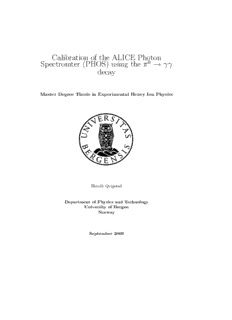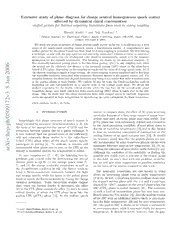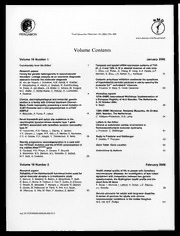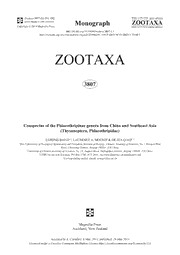
Conspectus of the Phlaeothripinae genera from China and Southeast Asia (Thysanoptera, Phlaeothripidae) PDF
Preview Conspectus of the Phlaeothripinae genera from China and Southeast Asia (Thysanoptera, Phlaeothripidae)
Zootaxa 3807 (1): 001–082 ISSN 1175-5326 (print edition) ZOOTAXA www.mapress.com/zootaxa/ Monograph Copyright © 2014 Magnolia Press ISSN 1175-5334 (online edition) http://dx.doi.org/10.11646/zootaxa.3807.1.1 http://zoobank.org/urn:lsid:zoobank.org:pub:2D4B429C-A8E3-4B02-9C15-286FCF7D04F1 ZOOTAXA 3807 Conspectus of the Phlaeothripinae genera from China and Southeast Asia (Thysanoptera, Phlaeothripidae) LI-HONG DANG1, 2, LAURENCE A. MOUND3 & GE-XIA QIAO1, 4 1Key Laboratory of Zoological Systematics and Evolution, Institute of Zoology, Chinese Academy of Sciences, No. 1 Beichen West Road, Chaoyang District, Beijing 100101, P.R.China 2University of Chinese Academy of Sciences, No. 19, Yuquan Road, Shijingshan District, Beijing 100049, P.R.China 3CSIRO Ecosystem Sciences, PO Box 1700, ACT 2601, Australia [laurence.mound@csiro.au] 4Corresponding author. Email: qiaogx@ioz.ac.cn Magnolia Press Auckland, New Zealand Accepted by A. Cavalleri: 6 Mar. 2014; published: 29 May 2014 Licensed under a Creative Commons Attribution License http://creativecommons.org/licenses/by/3.0 LI-HONG DANG, LAURENCE A. MOUND & GE-XIA QIAO Conspectus of the Phlaeothripinae genera from China and Southeast Asia (Thysanoptera, Phlaeothripidae) (Zootaxa 3807) 82 pp.; 30 cm. 29 May 2014 ISBN 978-1-77557-401-9 (paperback) ISBN 978-1-77557-402-6 (Online edition) FIRST PUBLISHED IN 2014 BY Magnolia Press P.O. Box 41-383 Auckland 1346 New Zealand e-mail: zootaxa@mapress.com http://www.mapress.com/zootaxa/ © 2014 Magnolia Press ISSN 1175-5326 (Print edition) ISSN 1175-5334 (Online edition) 2 · Zootaxa 3807 (1) © 2014 Magnolia Press DANG ET AL. Table of contents Abstract . . . . . . . . . . . . . . . . . . . . . . . . . . . . . . . . . . . . . . . . . . . . . . . . . . . . . . . . . . . . . . . . . . . . . . . . . . . . . . . . . . . . . . . . . . . . . . . . . . .4 Introduction . . . . . . . . . . . . . . . . . . . . . . . . . . . . . . . . . . . . . . . . . . . . . . . . . . . . . . . . . . . . . . . . . . . . . . . . . . . . . . . . . . . . . . . . . . . . . . .5 Key to Phlaeothripinae genera from China and SE Asia . . . . . . . . . . . . . . . . . . . . . . . . . . . . . . . . . . . . . . . . . . . . . . . . . . . . . . . . . . . .11 Ablemothrips Ananthakrishnan . . . . . . . . . . . . . . . . . . . . . . . . . . . . . . . . . . . . . . . . . . . . . . . . . . . . . . . . . . . . . . . . . . . . . . . . . . . . . . .15 Acanthothrips Uzel . . . . . . . . . . . . . . . . . . . . . . . . . . . . . . . . . . . . . . . . . . . . . . . . . . . . . . . . . . . . . . . . . . . . . . . . . . . . . . . . . . . . . . . . .15 Adelphothrips Priesner . . . . . . . . . . . . . . . . . . . . . . . . . . . . . . . . . . . . . . . . . . . . . . . . . . . . . . . . . . . . . . . . . . . . . . . . . . . . . . . . . . . . . .15 Adraneothrips Hood . . . . . . . . . . . . . . . . . . . . . . . . . . . . . . . . . . . . . . . . . . . . . . . . . . . . . . . . . . . . . . . . . . . . . . . . . . . . . . . . . . . . . . . .17 Agynaikothrips Okajima . . . . . . . . . . . . . . . . . . . . . . . . . . . . . . . . . . . . . . . . . . . . . . . . . . . . . . . . . . . . . . . . . . . . . . . . . . . . . . . . . . . . .17 Akarethrips gen.n. . . . . . . . . . . . . . . . . . . . . . . . . . . . . . . . . . . . . . . . . . . . . . . . . . . . . . . . . . . . . . . . . . . . . . . . . . . . . . . . . . . . . . . . . . .17 Akarethrips iotus sp.n. . . . . . . . . . . . . . . . . . . . . . . . . . . . . . . . . . . . . . . . . . . . . . . . . . . . . . . . . . . . . . . . . . . . . . . . . . . . . . . . . . . . . . .18 Alerothrips Bhatti . . . . . . . . . . . . . . . . . . . . . . . . . . . . . . . . . . . . . . . . . . . . . . . . . . . . . . . . . . . . . . . . . . . . . . . . . . . . . . . . . . . . . . . . . .18 Aleurodothrips Franklin . . . . . . . . . . . . . . . . . . . . . . . . . . . . . . . . . . . . . . . . . . . . . . . . . . . . . . . . . . . . . . . . . . . . . . . . . . . . . . . . . . . . .20 Ananthakrishnana Bhatti . . . . . . . . . . . . . . . . . . . . . . . . . . . . . . . . . . . . . . . . . . . . . . . . . . . . . . . . . . . . . . . . . . . . . . . . . . . . . . . . . . . .20 Andrethrips Mound . . . . . . . . . . . . . . . . . . . . . . . . . . . . . . . . . . . . . . . . . . . . . . . . . . . . . . . . . . . . . . . . . . . . . . . . . . . . . . . . . . . . . . . . .20 Androthrips Karny . . . . . . . . . . . . . . . . . . . . . . . . . . . . . . . . . . . . . . . . . . . . . . . . . . . . . . . . . . . . . . . . . . . . . . . . . . . . . . . . . . . . . . . . .22 Apelaunothrips Karny . . . . . . . . . . . . . . . . . . . . . . . . . . . . . . . . . . . . . . . . . . . . . . . . . . . . . . . . . . . . . . . . . . . . . . . . . . . . . . . . . . . . . . .22 Apterygothrips Priesner . . . . . . . . . . . . . . . . . . . . . . . . . . . . . . . . . . . . . . . . . . . . . . . . . . . . . . . . . . . . . . . . . . . . . . . . . . . . . . . . . . . . .23 Asianthrips Okajima . . . . . . . . . . . . . . . . . . . . . . . . . . . . . . . . . . . . . . . . . . . . . . . . . . . . . . . . . . . . . . . . . . . . . . . . . . . . . . . . . . . . . . . .23 Athlibothrips Priesner . . . . . . . . . . . . . . . . . . . . . . . . . . . . . . . . . . . . . . . . . . . . . . . . . . . . . . . . . . . . . . . . . . . . . . . . . . . . . . . . . . . . . . .23 Austrothrips Brethes . . . . . . . . . . . . . . . . . . . . . . . . . . . . . . . . . . . . . . . . . . . . . . . . . . . . . . . . . . . . . . . . . . . . . . . . . . . . . . . . . . . . . . . .24 Azaleothrips Ananthakrishnan . . . . . . . . . . . . . . . . . . . . . . . . . . . . . . . . . . . . . . . . . . . . . . . . . . . . . . . . . . . . . . . . . . . . . . . . . . . . . . . .24 Baenothrips Crawford . . . . . . . . . . . . . . . . . . . . . . . . . . . . . . . . . . . . . . . . . . . . . . . . . . . . . . . . . . . . . . . . . . . . . . . . . . . . . . . . . . . . . .24 Bagnalliella Karny . . . . . . . . . . . . . . . . . . . . . . . . . . . . . . . . . . . . . . . . . . . . . . . . . . . . . . . . . . . . . . . . . . . . . . . . . . . . . . . . . . . . . . . . .25 Bamboosiella Ananthakrishnan . . . . . . . . . . . . . . . . . . . . . . . . . . . . . . . . . . . . . . . . . . . . . . . . . . . . . . . . . . . . . . . . . . . . . . . . . . . . . . .25 Bradythrips Hood & Williams . . . . . . . . . . . . . . . . . . . . . . . . . . . . . . . . . . . . . . . . . . . . . . . . . . . . . . . . . . . . . . . . . . . . . . . . . . . . . . . .25 Cephalothrips Uzel . . . . . . . . . . . . . . . . . . . . . . . . . . . . . . . . . . . . . . . . . . . . . . . . . . . . . . . . . . . . . . . . . . . . . . . . . . . . . . . . . . . . . . . . .26 Chaetokarnyia Priesner . . . . . . . . . . . . . . . . . . . . . . . . . . . . . . . . . . . . . . . . . . . . . . . . . . . . . . . . . . . . . . . . . . . . . . . . . . . . . . . . . . . . .27 Chelaeothrips Karny . . . . . . . . . . . . . . . . . . . . . . . . . . . . . . . . . . . . . . . . . . . . . . . . . . . . . . . . . . . . . . . . . . . . . . . . . . . . . . . . . . . . . . . .27 Chirothripoides Bagnall . . . . . . . . . . . . . . . . . . . . . . . . . . . . . . . . . . . . . . . . . . . . . . . . . . . . . . . . . . . . . . . . . . . . . . . . . . . . . . . . . . . . .27 Coryphothrips Karny . . . . . . . . . . . . . . . . . . . . . . . . . . . . . . . . . . . . . . . . . . . . . . . . . . . . . . . . . . . . . . . . . . . . . . . . . . . . . . . . . . . . . . .28 Crinitothrips Okajima . . . . . . . . . . . . . . . . . . . . . . . . . . . . . . . . . . . . . . . . . . . . . . . . . . . . . . . . . . . . . . . . . . . . . . . . . . . . . . . . . . . . . .28 Crotonothrips Ananthakrishnan . . . . . . . . . . . . . . . . . . . . . . . . . . . . . . . . . . . . . . . . . . . . . . . . . . . . . . . . . . . . . . . . . . . . . . . . . . . . . . .28 Deplorothrips Mound & Walker . . . . . . . . . . . . . . . . . . . . . . . . . . . . . . . . . . . . . . . . . . . . . . . . . . . . . . . . . . . . . . . . . . . . . . . . . . . . . . .29 Dolichothrips Karny . . . . . . . . . . . . . . . . . . . . . . . . . . . . . . . . . . . . . . . . . . . . . . . . . . . . . . . . . . . . . . . . . . . . . . . . . . . . . . . . . . . . . . . .29 Dyothrips Kudô . . . . . . . . . . . . . . . . . . . . . . . . . . . . . . . . . . . . . . . . . . . . . . . . . . . . . . . . . . . . . . . . . . . . . . . . . . . . . . . . . . . . . . . . . . .29 Ecacanthothrips Bagnall . . . . . . . . . . . . . . . . . . . . . . . . . . . . . . . . . . . . . . . . . . . . . . . . . . . . . . . . . . . . . . . . . . . . . . . . . . . . . . . . . . . .31 Eothrips Hood . . . . . . . . . . . . . . . . . . . . . . . . . . . . . . . . . . . . . . . . . . . . . . . . . . . . . . . . . . . . . . . . . . . . . . . . . . . . . . . . . . . . . . . . . . . . .31 Eugynothrips Priesner . . . . . . . . . . . . . . . . . . . . . . . . . . . . . . . . . . . . . . . . . . . . . . . . . . . . . . . . . . . . . . . . . . . . . . . . . . . . . . . . . . . . . . .31 Eurhynchothrips Bagnall . . . . . . . . . . . . . . . . . . . . . . . . . . . . . . . . . . . . . . . . . . . . . . . . . . . . . . . . . . . . . . . . . . . . . . . . . . . . . . . . . . . .32 Gemmathrips Reyes . . . . . . . . . . . . . . . . . . . . . . . . . . . . . . . . . . . . . . . . . . . . . . . . . . . . . . . . . . . . . . . . . . . . . . . . . . . . . . . . . . . . . . . .32 Gigantothrips Zimmermann . . . . . . . . . . . . . . . . . . . . . . . . . . . . . . . . . . . . . . . . . . . . . . . . . . . . . . . . . . . . . . . . . . . . . . . . . . . . . . . . . .32 Glenothrips Priesner . . . . . . . . . . . . . . . . . . . . . . . . . . . . . . . . . . . . . . . . . . . . . . . . . . . . . . . . . . . . . . . . . . . . . . . . . . . . . . . . . . . . . . .33 Gynaikothrips Zimmermann . . . . . . . . . . . . . . . . . . . . . . . . . . . . . . . . . . . . . . . . . . . . . . . . . . . . . . . . . . . . . . . . . . . . . . . . . . . . . . . . . .33 Habrothrips Ananthakrishnan . . . . . . . . . . . . . . . . . . . . . . . . . . . . . . . . . . . . . . . . . . . . . . . . . . . . . . . . . . . . . . . . . . . . . . . . . . . . . . . .35 Haplothrips Amyot & Serville . . . . . . . . . . . . . . . . . . . . . . . . . . . . . . . . . . . . . . . . . . . . . . . . . . . . . . . . . . . . . . . . . . . . . . . . . . . . . . . .35 Heliothripoides Okajima . . . . . . . . . . . . . . . . . . . . . . . . . . . . . . . . . . . . . . . . . . . . . . . . . . . . . . . . . . . . . . . . . . . . . . . . . . . . . . . . . . . .36 Heliothripoides boltoni sp.n. . . . . . . . . . . . . . . . . . . . . . . . . . . . . . . . . . . . . . . . . . . . . . . . . . . . . . . . . . . . . . . . . . . . . . . . . . . . . . . . . .36 Holothrips Karny . . . . . . . . . . . . . . . . . . . . . . . . . . . . . . . . . . . . . . . . . . . . . . . . . . . . . . . . . . . . . . . . . . . . . . . . . . . . . . . . . . . . . . . . . .38 Hoplandrothrips Hood . . . . . . . . . . . . . . . . . . . . . . . . . . . . . . . . . . . . . . . . . . . . . . . . . . . . . . . . . . . . . . . . . . . . . . . . . . . . . . . . . . . . . .38 Hoplothrips Amyot & Serville . . . . . . . . . . . . . . . . . . . . . . . . . . . . . . . . . . . . . . . . . . . . . . . . . . . . . . . . . . . . . . . . . . . . . . . . . . . . . . . .38 Horistothrips Morgan . . . . . . . . . . . . . . . . . . . . . . . . . . . . . . . . . . . . . . . . . . . . . . . . . . . . . . . . . . . . . . . . . . . . . . . . . . . . . . . . . . . . . . .41 Hyidiothrips Hood . . . . . . . . . . . . . . . . . . . . . . . . . . . . . . . . . . . . . . . . . . . . . . . . . . . . . . . . . . . . . . . . . . . . . . . . . . . . . . . . . . . . . . . . .43 Isotrichothrips Priesner . . . . . . . . . . . . . . . . . . . . . . . . . . . . . . . . . . . . . . . . . . . . . . . . . . . . . . . . . . . . . . . . . . . . . . . . . . . . . . . . . . . . .43 Jennythrips Bhatti . . . . . . . . . . . . . . . . . . . . . . . . . . . . . . . . . . . . . . . . . . . . . . . . . . . . . . . . . . . . . . . . . . . . . . . . . . . . . . . . . . . . . . . . . .43 Karnyothrips Watson . . . . . . . . . . . . . . . . . . . . . . . . . . . . . . . . . . . . . . . . . . . . . . . . . . . . . . . . . . . . . . . . . . . . . . . . . . . . . . . . . . . . . . .46 Leeuwenia Karny . . . . . . . . . . . . . . . . . . . . . . . . . . . . . . . . . . . . . . . . . . . . . . . . . . . . . . . . . . . . . . . . . . . . . . . . . . . . . . . . . . . . . . . . . .46 Liophloeothrips Priesner . . . . . . . . . . . . . . . . . . . . . . . . . . . . . . . . . . . . . . . . . . . . . . . . . . . . . . . . . . . . . . . . . . . . . . . . . . . . . . . . . . . . .46 Liothrips Uzel . . . . . . . . . . . . . . . . . . . . . . . . . . . . . . . . . . . . . . . . . . . . . . . . . . . . . . . . . . . . . . . . . . . . . . . . . . . . . . . . . . . . . . . . . . . . .49 Litotetothrips Priesner . . . . . . . . . . . . . . . . . . . . . . . . . . . . . . . . . . . . . . . . . . . . . . . . . . . . . . . . . . . . . . . . . . . . . . . . . . . . . . . . . . . . . .49 Lizalothrips Okajima . . . . . . . . . . . . . . . . . . . . . . . . . . . . . . . . . . . . . . . . . . . . . . . . . . . . . . . . . . . . . . . . . . . . . . . . . . . . . . . . . . . . . . .49 Logadothrips Priesner . . . . . . . . . . . . . . . . . . . . . . . . . . . . . . . . . . . . . . . . . . . . . . . . . . . . . . . . . . . . . . . . . . . . . . . . . . . . . . . . . . . . . . .53 Macrophthalmothrips Karny . . . . . . . . . . . . . . . . . . . . . . . . . . . . . . . . . . . . . . . . . . . . . . . . . . . . . . . . . . . . . . . . . . . . . . . . . . . . . . . . .54 PHLAEOTHRIPINAE GENERA FROM ASIA Zootaxa 3807 (1) © 2014 Magnolia Press · 3 Manothrips Priesner . . . . . . . . . . . . . . . . . . . . . . . . . . . . . . . . . . . . . . . . . . . . . . . . . . . . . . . . . . . . . . . . . . . . . . . . . . . . . . . . . . . . . . . .54 Margaritothrips Priesner . . . . . . . . . . . . . . . . . . . . . . . . . . . . . . . . . . . . . . . . . . . . . . . . . . . . . . . . . . . . . . . . . . . . . . . . . . . . . . . . . . . .54 Mastigothrips Priesner . . . . . . . . . . . . . . . . . . . . . . . . . . . . . . . . . . . . . . . . . . . . . . . . . . . . . . . . . . . . . . . . . . . . . . . . . . . . . . . . . . . . . .55 Medogothrips Han . . . . . . . . . . . . . . . . . . . . . . . . . . . . . . . . . . . . . . . . . . . . . . . . . . . . . . . . . . . . . . . . . . . . . . . . . . . . . . . . . . . . . . . . .55 Menothrips Hood . . . . . . . . . . . . . . . . . . . . . . . . . . . . . . . . . . . . . . . . . . . . . . . . . . . . . . . . . . . . . . . . . . . . . . . . . . . . . . . . . . . . . . . . . .55 Mesothrips Zimmermann . . . . . . . . . . . . . . . . . . . . . . . . . . . . . . . . . . . . . . . . . . . . . . . . . . . . . . . . . . . . . . . . . . . . . . . . . . . . . . . . . . . .57 Murphythrips Mound & Palmer . . . . . . . . . . . . . . . . . . . . . . . . . . . . . . . . . . . . . . . . . . . . . . . . . . . . . . . . . . . . . . . . . . . . . . . . . . . . . . .58 Myopothrips Priesner . . . . . . . . . . . . . . . . . . . . . . . . . . . . . . . . . . . . . . . . . . . . . . . . . . . . . . . . . . . . . . . . . . . . . . . . . . . . . . . . . . . . . . .58 Mystrothrips Priesner . . . . . . . . . . . . . . . . . . . . . . . . . . . . . . . . . . . . . . . . . . . . . . . . . . . . . . . . . . . . . . . . . . . . . . . . . . . . . . . . . . . . . . .62 Oidanothrips Moulton . . . . . . . . . . . . . . . . . . . . . . . . . . . . . . . . . . . . . . . . . . . . . . . . . . . . . . . . . . . . . . . . . . . . . . . . . . . . . . . . . . . . . .62 Okajimathrips Bhatti . . . . . . . . . . . . . . . . . . . . . . . . . . . . . . . . . . . . . . . . . . . . . . . . . . . . . . . . . . . . . . . . . . . . . . . . . . . . . . . . . . . . . . .62 Phasmothrips Priesner . . . . . . . . . . . . . . . . . . . . . . . . . . . . . . . . . . . . . . . . . . . . . . . . . . . . . . . . . . . . . . . . . . . . . . . . . . . . . . . . . . . . . .64 Phenicothrips Bhatti . . . . . . . . . . . . . . . . . . . . . . . . . . . . . . . . . . . . . . . . . . . . . . . . . . . . . . . . . . . . . . . . . . . . . . . . . . . . . . . . . . . . . . . .64 Phylladothrips Priesner . . . . . . . . . . . . . . . . . . . . . . . . . . . . . . . . . . . . . . . . . . . . . . . . . . . . . . . . . . . . . . . . . . . . . . . . . . . . . . . . . . . . .64 Plectrothrips Hood . . . . . . . . . . . . . . . . . . . . . . . . . . . . . . . . . . . . . . . . . . . . . . . . . . . . . . . . . . . . . . . . . . . . . . . . . . . . . . . . . . . . . . . . .65 Plicothrips Bhatti . . . . . . . . . . . . . . . . . . . . . . . . . . . . . . . . . . . . . . . . . . . . . . . . . . . . . . . . . . . . . . . . . . . . . . . . . . . . . . . . . . . . . . . . . .65 Pnigmothrips Priesner . . . . . . . . . . . . . . . . . . . . . . . . . . . . . . . . . . . . . . . . . . . . . . . . . . . . . . . . . . . . . . . . . . . . . . . . . . . . . . . . . . . . . .65 Podothrips Hood . . . . . . . . . . . . . . . . . . . . . . . . . . . . . . . . . . . . . . . . . . . . . . . . . . . . . . . . . . . . . . . . . . . . . . . . . . . . . . . . . . . . . . . . . . .66 Ponticulothrips Haga & Okajima . . . . . . . . . . . . . . . . . . . . . . . . . . . . . . . . . . . . . . . . . . . . . . . . . . . . . . . . . . . . . . . . . . . . . . . . . . . . . .66 Praeciputhrips Reyes . . . . . . . . . . . . . . . . . . . . . . . . . . . . . . . . . . . . . . . . . . . . . . . . . . . . . . . . . . . . . . . . . . . . . . . . . . . . . . . . . . . . . . .66 Praepodothrips Priesner & Seshadri . . . . . . . . . . . . . . . . . . . . . . . . . . . . . . . . . . . . . . . . . . . . . . . . . . . . . . . . . . . . . . . . . . . . . . . . . . .67 Preeriella Hood . . . . . . . . . . . . . . . . . . . . . . . . . . . . . . . . . . . . . . . . . . . . . . . . . . . . . . . . . . . . . . . . . . . . . . . . . . . . . . . . . . . . . . . . . . .67 Propealiothrips Reyes . . . . . . . . . . . . . . . . . . . . . . . . . . . . . . . . . . . . . . . . . . . . . . . . . . . . . . . . . . . . . . . . . . . . . . . . . . . . . . . . . . . . . .67 Propesolomonthrips Reyes . . . . . . . . . . . . . . . . . . . . . . . . . . . . . . . . . . . . . . . . . . . . . . . . . . . . . . . . . . . . . . . . . . . . . . . . . . . . . . . . . . .68 Prosantothrips Priesner . . . . . . . . . . . . . . . . . . . . . . . . . . . . . . . . . . . . . . . . . . . . . . . . . . . . . . . . . . . . . . . . . . . . . . . . . . . . . . . . . . . . .68 Psalidothrips Priesner . . . . . . . . . . . . . . . . . . . . . . . . . . . . . . . . . . . . . . . . . . . . . . . . . . . . . . . . . . . . . . . . . . . . . . . . . . . . . . . . . . . . . . 68 Psephenothrips Reyes . . . . . . . . . . . . . . . . . . . . . . . . . . . . . . . . . . . . . . . . . . . . . . . . . . . . . . . . . . . . . . . . . . . . . . . . . . . . . . . . . . . . . . .69 Pygmaeothrips Karny . . . . . . . . . . . . . . . . . . . . . . . . . . . . . . . . . . . . . . . . . . . . . . . . . . . . . . . . . . . . . . . . . . . . . . . . . . . . . . . . . . . . . . 69 Rosingothrips Reyes . . . . . . . . . . . . . . . . . . . . . . . . . . . . . . . . . . . . . . . . . . . . . . . . . . . . . . . . . . . . . . . . . . . . . . . . . . . . . . . . . . . . . . . .69 Sagenothrips Priesner . . . . . . . . . . . . . . . . . . . . . . . . . . . . . . . . . . . . . . . . . . . . . . . . . . . . . . . . . . . . . . . . . . . . . . . . . . . . . . . . . . . . . . .70 Sinuothrips Collins . . . . . . . . . . . . . . . . . . . . . . . . . . . . . . . . . . . . . . . . . . . . . . . . . . . . . . . . . . . . . . . . . . . . . . . . . . . . . . . . . . . . . . . . .70 Solomonthrips Mound . . . . . . . . . . . . . . . . . . . . . . . . . . . . . . . . . . . . . . . . . . . . . . . . . . . . . . . . . . . . . . . . . . . . . . . . . . . . . . . . . . . . . .70 Sophiothrips Hood . . . . . . . . . . . . . . . . . . . . . . . . . . . . . . . . . . . . . . . . . . . . . . . . . . . . . . . . . . . . . . . . . . . . . . . . . . . . . . . . . . . . . . . . .71 Sphingothrips Ananthakrishnan . . . . . . . . . . . . . . . . . . . . . . . . . . . . . . . . . . . . . . . . . . . . . . . . . . . . . . . . . . . . . . . . . . . . . . . . . . . . . . .71 Stephanothrips Trybom . . . . . . . . . . . . . . . . . . . . . . . . . . . . . . . . . . . . . . . . . . . . . . . . . . . . . . . . . . . . . . . . . . . . . . . . . . . . . . . . . . . . .71 Strepterothrips Hood . . . . . . . . . . . . . . . . . . . . . . . . . . . . . . . . . . . . . . . . . . . . . . . . . . . . . . . . . . . . . . . . . . . . . . . . . . . . . . . . . . . . . . . .72 Streptothrips Priesner . . . . . . . . . . . . . . . . . . . . . . . . . . . . . . . . . . . . . . . . . . . . . . . . . . . . . . . . . . . . . . . . . . . . . . . . . . . . . . . . . . . . . . .72 Sumatrothrips Priesner . . . . . . . . . . . . . . . . . . . . . . . . . . . . . . . . . . . . . . . . . . . . . . . . . . . . . . . . . . . . . . . . . . . . . . . . . . . . . . . . . . . . . .72 Terthrothrips Karny . . . . . . . . . . . . . . . . . . . . . . . . . . . . . . . . . . . . . . . . . . . . . . . . . . . . . . . . . . . . . . . . . . . . . . . . . . . . . . . . . . . . . . . .73 Terthrothrips strasseni sp.n. . . . . . . . . . . . . . . . . . . . . . . . . . . . . . . . . . . . . . . . . . . . . . . . . . . . . . . . . . . . . . . . . . . . . . . . . . . . . . . . . . .73 Thlibothrips Priesner. . . . . . . . . . . . . . . . . . . . . . . . . . . . . . . . . . . . . . . . . . . . . . . . . . . . . . . . . . . . . . . . . . . . . . . . . . . . . . . . . . . . . . . 74 Trichinothrips Bagnall . . . . . . . . . . . . . . . . . . . . . . . . . . . . . . . . . . . . . . . . . . . . . . . . . . . . . . . . . . . . . . . . . . . . . . . . . . . . . . . . . . . . . .74 Urothrips Bagnall . . . . . . . . . . . . . . . . . . . . . . . . . . . . . . . . . . . . . . . . . . . . . . . . . . . . . . . . . . . . . . . . . . . . . . . . . . . . . . . . . . . . . . . . . .75 Veerabahuthrips Ramakrishna . . . . . . . . . . . . . . . . . . . . . . . . . . . . . . . . . . . . . . . . . . . . . . . . . . . . . . . . . . . . . . . . . . . . . . . . . . . . . . . .75 Xylaplothrips Priesner . . . . . . . . . . . . . . . . . . . . . . . . . . . . . . . . . . . . . . . . . . . . . . . . . . . . . . . . . . . . . . . . . . . . . . . . . . . . . . . . . . . . . .76 Zelotothrips Priesner . . . . . . . . . . . . . . . . . . . . . . . . . . . . . . . . . . . . . . . . . . . . . . . . . . . . . . . . . . . . . . . . . . . . . . . . . . . . . . . . . . . . . . . .76 Acknowledgements . . . . . . . . . . . . . . . . . . . . . . . . . . . . . . . . . . . . . . . . . . . . . . . . . . . . . . . . . . . . . . . . . . . . . . . . . . . . . . . . . . . . . . . .77 References . . . . . . . . . . . . . . . . . . . . . . . . . . . . . . . . . . . . . . . . . . . . . . . . . . . . . . . . . . . . . . . . . . . . . . . . . . . . . . . . . . . . . . . . . . . . . . .77 Abstract An illustrated identification key is provided to 100 genera of Phlaeothripinae from China and Southeast Asia, together with a diagnosis for each genus, and comments on the species diversity. One new genus with a new species, Akarethrips iotus gen.n. & sp.n., and two new species, Heliothripoides boltoni sp.n. and Terthrothrips strasseni sp.n., are described from specimens collected in Peninsular Malaysia and Java respectively. Three Phlaeothripinae genera are synonymised, Mychiothrips Haga & Okajima syn.n. of Veerabahuthrips Ramakrishna, Syringothrips Priesner syn.n. of Gigantothrips Zimmermann, and Sauridothrips Priesner syn.n. of Gynaikothrips Zimmermann. In addition, four nomenclatural changes are included, Adelphothrips ignotus (Reyes) comb.n. transferred from Mesothrips, Karnyothrips palmerae (Chen) comb.n from Xylaplothrips, Xylaplothrips bogoriensis (Karny) comb.n from Brachythrips, and Oidanothrips notabilis Feng, Guo & Duan considered as a new synonym of Oidanothrips frontalis (Bagnall). Key words: Phlaeothripinae, genera, illustrated key, new genus, new species, China, Southeast Asia 4 · Zootaxa 3807 (1) © 2014 Magnolia Press DANG ET AL. Introduction The Phlaeothripinae, with 2845 species and 376 genera, is the largest subfamily in the insect Order Thysanoptera, with species exhibiting a wide range of biologies (Mound & Marullo 1996). A large proportion of the species feed on fungal hyphae or their break-down products, and another large group feed on green tissues mainly of angiosperms on which some species induce galls; a relatively small group of species live and feed in flowers; a few species feed on mosses or ferns, and a few others are predatory on small arthropods. This paper is the first attempted overview of the diversity of the Phlaeothripinae in Southeast Asia, one of the most biologically diverse areas in the world. It is not an analysis of the systematics of the group, however comments on systematic relationships are included as a basis for future work. This paper provides an illustrated identification key to 100 genera from China and SE Asia, including one new genus, together with a diagnosis for each genus, also comments on the species diversity and distribution within each genus. Full species lists and nomenclatural information is available at ThripsWiki (2014). The target area The region considered here includes China and the Southeast Asian countries, but excluding India to the west and Japan to the east. This is an arbitrary choice, based on the limitations of time and available specimens. However, for the areas east and west of our target area major taxonomic treatments of this group of insects are available: Okajima (2006) for Japan; and Ananthakrishnan and Sen (1980) for India. Our selected area is ecologically highly diverse, from the Palaearctic of northern China and its extensive arid areas, to the montane areas of southwestern China, and the fragmented rainforests of the Indonesian islands. There have been various recent studies on elements of the thrips fauna of some countries in this area, including the Philippines (Okajima 1984; Reyes 1994), Malaysia (Okajima 1978b; Palmer & Mound 1978; Kudo 1995, 1997; Mound & Azidah 2009; Mound & Ng 2009; Ng et al. 2010; Eow et al. 2011), Indonesia (Okajima 1987b, 1987c, 1988b, 1989a; zur Strassen 1994; Sartiami & Mound 2013), and Thailand (Okajima 1978a, 1978b, 1983, 1989b). In contrast, the thrips fauna of several countries is still largely unexplored, including Cambodia, Vietnam, Laos, Burma, Brunei, East Timor and the island of New Guinea. Moreover, despite extensive work by several authors, particularly Zhang and Tong (1994) and Han (1997), the latest check-list of the thrips of China (Mirab-Balou et al. 2011) is probably not a good indication of the richness of the fauna of that country. Few samples have been taken in the highly dissected southwest of China bordering Burma and Laos, where the fauna probably shares taxa with India across the Himalayas. There has been even less collecting in the semi-desert areas of western China, and this area is likely to share faunal elements with countries as far west as Iran where there is a similar xeric flora. In contrast, the southern fauna of Hainan and Guangdong is tropical and shares many thrips taxa with Indonesia and southern Japan. Between mainland Asia and Australia there is a complex of about 17,000 islands that are referred to by biogeographers as the Greater Sunda Islands, and studies on the bird fauna of the area suggest that there are three major faunal sub-regions (MacKinnon & Phillipps 1993). To the north and west is the Sundaic subregion of the Malay Peninsula, Sumatra, Borneo and Java. To the south and east is the Australo- Papuan subregion, comprising Australia and New Guinea. And between these two continental shelves is the Wallacean subregion, comprising the many islands of the Phillipines, Sulawesi and the Lesser Sundas. Because thrips are readily distributed by winds, it is not likely that the distribution of fungal feeding thrips will reflect similar faunal distributions to vertebrates, and the thrips fauna associated with leaves has been so little explored that it is impossible to detect any distribution patterns. Most of the taxa recorded from Indonesia are known only from studies on plant galls in the first quarter of the 20th century (zur Strassen 1994). These thrips taxa have not previously been illustrated nor assessed within a modern systematic framework, but the diversity in their structure emphasises the probable richness of the Indonesian thrips fauna. The target group The Tubulifera is the larger of the two Thysanoptera suborders, but includes only a single family, the Phlaeothripidae, with about 3500 species in 460 genera (ThripsWiki 2014). Two subfamilies are recognised, and the smaller of these, the spore-feeding Idolothripinae, has been the focus of considerable taxonomic study (Mound & Palmer 1983a; Eow et al. 2011; Dang & Qiao 2013b), and the generic classification is currently reasonably effective. However, there have been only limited attempts at overviews of the larger subfamily, the Phlaeothripinae. PHLAEOTHRIPINAE GENERA FROM ASIA Zootaxa 3807 (1) © 2014 Magnolia Press · 5 Almost 50% of the genera in this group are monobasic, and the various suprageneric classifications proposed seem to have little phylogenetic structure (Buckman et al. 2013). Species in this subfamily are often polymorphic, thus making relationships difficult to detect, and many species have been described on few or poorly prepared, slide- mounted specimens (Mound et al. 2013). For these reasons, it is difficult for any student to begin studies on any taxa within the Phlaeothripinae, and the present work has the objective of providing an entry point for future studies. Review of Phlaeothripidae classification systems The names for the Order Thysanoptera and its two suborders date from Haliday (1836). Subsequently, Uzel (1895) produced the major work that provided the basis for future studies on these insects, and recognised Phlaeothripidae as the single family of Tubulifera, to which Bagnall (1908) later added the Idolothripidae as a second family. The subfamily sense in which these two names are now used derives from Stannard (1957), although he used Megathripinae, a junior synonym of Idolothripinae that was erected by Karny (1913). The classification within the Phlaeothripidae proposed by Stannard attempted to recognise phylogenetic relationships. In contrast, the classification proposed by Priesner (1961) was essentially typological, with many group names provided for taxa exhibiting some unusual character state. A particularly unfortunate decision in that classification was to place Hoplothrips, a major genus of fungus-feeding species, in the same group as the many genera of leaf-feeding species related to Liothrips. This is particularly relevant here, because Han (1997), in the only review of the Thysanoptera of China, adopted the Priesner typological classification. One major objective of the work presented here is to draw to the attention of thrips students in China and Southeast Asia a more modern approach to thrips phylogenetic relationships, and to emphasise that most of the suprageneric names in Han and Priesner are no longer used. The various names proposed for supra-generic taxa now placed in the Idolothripinae have been discussed by Mound and Palmer (1983a). The following comments refer to the names available within the Phlaeothripinae. Stannard (1957) recognized the following as representing nine major lineages within the Phlaeothripinae: Haplothrips; Gigantothrips; Amphibolothrips; Hyidiothrips; Plectrothrips; Docessissophothrips; Williamsiella; Neurothrips; and Glyptothrips. Mound and Marullo (1996) built on the ideas of Stannard, but recognized only three major lineages. The first was Stannard’s Haplothrips-lineage and this was subsequently treated by Mound and Minaei (2007) as the Tribe Haplothripini (Table 1), a group of flower-feeders that also includes genera of predatory species. The second major group recognised by Mound and Marullo (1996) is the Liothrips-lineage that includes most of the leaf-feeding Phlaeothripinae (Table 1), and this corresponds to the group discussed by Stannard as the Gigantothrips line. The third major group is the Phlaeothrips-lineage of species most of which feed on fungal hyphae, and this comprises the remaining seven groups recognized by Stannard (Table 1). Amongst this large assemblage, the Amphibolothrips genus-group is sometimes referred to as the urothripines (Mound 1972; Ulitzka & Mound 2014); these are small species that commonly live in leaf-litter, and have the tube and ninth abdominal tergite particularly elongate. Members of the Hyidiothrips genus-group are minute, pale and laterally flattened species. Although generally found in leaf-litter where they are presumed to be fungus-feeders (Okajima 2006), in Australia one species has been found on the leaves of Lantana where it appears to be predatory on mites. Species of the Plectrothrips genus-group are fungus-feeders on dead branches, and have the sensorium on the second antennal segment placed on the basal half of that segment (Okajima 1981). The Docessissophothrips genus-group includes fungus-feeding species with unusually broad maxillary stylets that are often greatly elongate, and most of these species are placed in the genus Holothrips. In contrast, the Williamsiella genus-group involves species in which the stylets are sometimes very short, and these thrips are associated with mosses (Mound 1989). The final two groups recognized by Stannard, the Neurothrips and Glyptothrips lines, include most of the genera of fungus-feeding species found on dead branches and in leaf litter, including Phlaeothrips, Hoplothrips, Adraneothrips, and Hoplandrothrips. The Glyptothrips genus-group has been used for taxa with prominent reticulation on the head, but that condition is now recognised as highly variable within some genera (Mound 2002). The suprageneric classification of Phlaeothripinae remains less than satisfactory. Two reasonably well-defined major groups can be distinguished, the Haplothripini and the Liothrips-lineage. But the Phlaeothrips-lineage of fungus-feeding species is clearly a complex, polyphyletic assemblage (Buckman et al. 2013). 6 · Zootaxa 3807 (1) © 2014 Magnolia Press DANG ET AL. TABLE 1. List of Phlaeothripinae genera discussed in this paper [Number of described species in parentheses—see ThripsWiki 2014] [Austrothrips—see main text; Chalepothrips Priesner 1968: 191—name invalid] Haplothripini genera Phlaeothrips-lineage genera Akarethrips Dang, Mound & Qiao (1) Ablemothrips Ananthakrishnan (3) Ananthakrishnana Bhatti (1) Acanthothrips Uzel (13) Androthrips Karny (12) Adraneothrips Hood (77) Apterygothrips Priesner (40) Aleurodothrips Franklin (1) Bagnalliella Karny (9) Andrethrips Mound (2) Dolichothrips Karny (20) Apelaunothrips Karny (38) Dyothrips Kudô (1) Asianthrips Okajima (1) Glenothrips Priesner (1) Azaleothrips Ananthakrishnan (10) Haplothrips Amyot & Serville (243) Bamboosiella Ananthakrishnan (28) Karnyothrips Watson (48) Cephalothrips Uzel (8) Logadothrips Priesner (1) Deplorothrips Mound & Walker (9) Mesothrips Zimmermann (42) Ecacanthothrips Bagnall (11) Okajimathrips Bhatti (1) Heliothripoides Okajima (2) Plicothrips Bhatti (2) Hoplandrothrips Hood (117) Podothrips Hood (30) Hoplothrips Amyot & Serville (128) Praepodothrips Priesner & Seshadri (7) Lizalothrips Okajima (2) Sinuothrips Collins (1) Macrophthalmothrips Karny (16) Sumatrothrips Priesner (1) Margaritothrips Priesner (3) Xylaplothrips Priesner (27) Murphythrips Mound & Palmer (1) Mystrothrips Priesner (7) Liothrips-lineage genera Phylladothrips Priesner (9) Propesolomonthrips Reyes (1) Adelphothrips Priesner (4) Prosantothrips Priesner (1) Agynaikothrips Okajima (2) Psalidothrips Priesner (28) Athlibothrips Priesner (4) Pygmaeothrips Karny (1) Chaetokarnyia Priesner (4) Sagenothrips Priesner (1) Chelaeothrips Karny (2) Solomonthrips Mound (8) Coryphothrips Karny (2) Strepterothrips Hood (9) Crotonothrips Ananthakrishnan (16) Terthrothrips Karny (26) Eothrips Hood (13) Trichinothrips Bagnall (8) Eugynothrips Priesner (16) Veerabahuthrips Ramakrishna (8) Eurhynchothrips Bagnall (5) Gemmathrips Reyes (1) Amphibolothrips genus-group Gigantothrips Zimmermann (19) Alerothrips Bhatti (3) Gynaikothrips Zimmermann (40) Baenothrips Crawford (11) Horistothrips Morgan (5) Bradythrips Hood & Williams (6) Isotrichothrips Priesner (2) Habrothrips Ananthakrishnan (1) Jennythrips Bhatti (1) Stephanothrips Trybom (29) Leeuwenia Karny (27) Urothrips Bagnall (9) Liophloeothrips Priesner (16) Liothrips Uzel (285) Hyidiothrips genus-group Litotetothrips Priesner (11) Crinitothrips Okajima (5) Manothrips Priesner (1) Hyidiothrips Hood (10) Medogothrips Han (1) Preeriella Hood (20) Myopothrips Priesner (1) Phasmothrips Priesner (1) Plectrothrips genus-group Phenicothrips Bhatti (8) Chirothripoides Bagnall (5) Pnigmothrips Priesner (1) Mastigothrips Priesner (1) Ponticulothrips Haga & Okajima (1) Menothrips Hood (1) Praeciputhrips Reyes (1) Plectrothrips Hood (2) Propealiothrips Reyes (1) Streptothrips Priesner (32) Psephenothrips Reyes (5) Rosingothrips Reyes (1) Docessissophothrips genus-group Sphingothrips Ananthakrishnan (1) Holothrips Karny (127) Thlibothrips Priesner (7) Oidanothrips Moulton (12) Zelotothrips Priesner (1) Williamsiella genus-group Sophiothrips Hood (25) PHLAEOTHRIPINAE GENERA FROM ASIA Zootaxa 3807 (1) © 2014 Magnolia Press · 7 Feeding associations of Phlaeothripinae The range of substances on which Phlaeothripinae species feed is extensive, and includes fungi, plant leaves, flowers and other small insects. Flower-feeding in this subfamily is largely restricted to members of the Tribe Haplothripini, and is typical of species in the genera Haplothrips, Neoheegeria and Dolichothrips, and possibly a few others. However, other genera of Haplothripini include predatory species, such as Podothrips, at least some Karnyothrips, and also a few Haplothrips. Leaf-feeding is largely restricted to the members of the Liothrips- lineage (Table 1), and these occur in the key below mainly between couplets 35 and 60. Liothrips is the most species-rich genus of Phlaeothripidae with species all over the world. Several well-known genera are closely related to Liothrips, including Gynaikothrips, Gigantothrips and Leeuwenia. Many of these leaf-feeding thrips induce galls, and various similar-looking species are known to invade these galls. Unfortunately, in Southeast Asia there have been few studies on the interactions amongst the thrips that can be found in galls, in contrast to biological studies in Australia (Mound et al. 1998; Crespi et al. 2004; Tree & Mound 2009; Tree & Walter 2009). A particularly large suite of thrips are fungus-feeders, living and breeding on dead leaves and dead branches. These species comprise the Phlaeothrips-lineage, and this is the most species rich group of Phlaeothripinae (Table 1). This group includes some of the most polymorphic species, and the remarkable variation in male size and structure in many species is presumably related to male/male competitive mating behaviour (Crespi 1988), but no behavioural studies have been carried out on such thrips in Asia. Some leaf-feeding and flower-living thrips are known to have specific host plant associations. However, the recognition and definition of ‘host plant’ for a thrips is sometimes not easy. Adults may disperse widely from their breeding sites, and may alight on many different plants on which they cannot breed, and possibly do not feed. Many authors list several plant names under a specific heading ‘Hosts’, but rarely produce any evidence that a thrips was breeding on such plants. Often it is clear that such “hosts” were merely the “finding-places” from which adults had been swept or beaten, and such records are of little significance in furthering our understanding of how and where a thrips species lives. A practical definition of host plant for a thrips species is a plant on which the insect is able to maintain a population (Mound 2013a), although it must be remembered that a thrips species may breed more successfully on some plants than on others. Moreover, the flowers of some plant species may provide important mating or feeding sites without being true hosts, in the sense that a species does not breed on them. Genus identification systems for Phlaeothripinae Priesner (1949) provided a world-wide key to all of the named genera of the entire Thysanoptera. However, not only is it clear that he did not study many of the genera included in his key, but the nomenclature and taxonomy has changed radically in the following half-century, and the key is now misleading and of limited use. Priesner (1964a) published a key to European genera, and also a key (1964b) to genera recorded from Egypt, but although these remain the only available identification tools for those areas, their effectiveness as identification tools is limited by subsequent changes in taxonomy and nomenclature. Stannard (1957) provided a revised classification and key to the genera of North America, and later a key to the genera from Illinois (1968). The only recent identification system in North America is the electronic system by Hoddle et al. (2012) for California, but Mound and Marullo (1996) provided a key to 100 genera from the Neotropics. For the Asian fauna, Han (1997) provided a key to 26 genera of Phlaeothripinae from China, and this remains the only reference work available for this country, although the systematic arrangement used is long out of date. More recently, Reyes (1994) provided a key to 34 genera from the Philippines, and Okajima (2006) a key to 58 genera from Japan. Because the fauna of Japan includes the subtropical Ryukyu Islands, this key from Japan is broadly useful in Southeast Asia. Finally, Mound et al. (2013) published an illustrated key to 39 genera of Australian fungivorous Phlaeothripinae from leaf-litter and dead branches, and this also includes some taxa that are found in Asia. Classification problems among Phlaeothripinae As indicated above, the classification of this group is not satisfactory, with many genera remaining poorly defined. For example, although the species of Leeuwenia appear to be distinctive with their elongate tube bearing numerous lateral setae, this condition is shared by some species in Gigantothrips and Gynaikothrips, and a few species of Leeuwenia have the tube relatively short (Mound 2004). Moreover, there are species in each of Gigantothrips, Gynaikothrips and Liothrips that might equally well be placed in one of the other two genera. 8 · Zootaxa 3807 (1) © 2014 Magnolia Press DANG ET AL. Eugynothrips is a particularly poorly defined genus, used for a group of species that have the head rather short, the antennal sensoria long and slender, and the males with a fore tarsal tooth. The two subgenera listed within Eugynothrips are distinguished only on the length of the tube; both subgenera include species in which the postocular setae on the head are very short, and other species in which these setae are long. Phenicothrips was erected as a subgenus for a few species of Liothrips in which the antennae and their sensoria are particularly elongate, but the type species, daetymon, has the pronotum with reticulation that is very similar to some common Gynaikothrips species, and some other species of Liothrips also have elongate antennae. Adelphothrips is used for some species that bear two pairs of postocular setae, but some Gynaikothrips species from Fiji and Australia also have such setae. Within this Liothrips complex there are many genera that have been distinguished each for single species that exhibits some unusual character state; examples are Ponticulothrips for a Liothrips-like species in which the head bears a pair of cheek setae; Sphingothrips for a species with the head sharply constricted at the base and with stout cheek setae; Propealiothrips for a species with the fore femora enlarged in the male; Myopothrips for a species in which the fore tibia bears a prominent apical claw; Phasmothrips for a species with numerous short, stout pronotal setae; Zelotothrips for a species with prominent cheek setae. Genera that are based on single specimens, such as Propesolomonthrips and Manothrips, are difficult to assess in the absence of any knowledge of structural variation. At couplet 37 of the key below, four genera are indicated as having one or more postero-lateral ommatidia enlarged on the compound eyes. Each of these genera is known only from a single individual or small sample; the possibility that this unusual eye structure represents a synapomorphy of the four species involved requires more extensive field sampling. Medogothrips is included in the key below, but is difficult to recognize because of the poor quality of the original slide mounts. Similarly difficult to evaluate are many genera based on specimens prepared onto slides by Karny about 100 years ago. These are usually not cleared, and are commonly mounted ventral side uppermost. Some genera, including Azaleothrips and Mystrothrips, are defined as comprising species with the body surface strongly reticulate, but species that are otherwise similar in structure have weaker reticulation and are thus more difficult to place. The last four genera in the key below are particularly difficult. Apelaunothrips species can be recognized by their relatively wide maxillary stylets, but on other character states this genus seems allied to Adraneothrips (Dang et al. 2013; Mound 2013b). And although Hoplandrothrips and Hoplothrips were placed in widely separate subtribes by Priesner (1961), more recent studies in Australia (Mound & Tree 2013) suggest that these two, together with Adraneothrips, are closely related. In addition to the relationship complexities outlined above, the classification and identification of taxa in the Phlaeothripinae are subject to two major problems – the technical difficulties involved in specimens poorly mounted onto microscope slides, and the extent of structural polymorphism and colour variation within many species. The first of these is discussed further below, but the second is an essential part of the biology of many thrips species. For example, Ecacanthothrips tibialis has been described under 17 different species names in four different genera, because large and small males look very different from each other and also different from females. This variation is associated with mating systems that presumably involve male/male competition, and also depends on the quantity and quality of the fungi on which this thrips feeds that are likely to vary with rainfall and temperature. Such problems are not restricted to fungus-feeding species, because Mesothrips jordani that breeds on the leaves of Ficus trees varies greatly in size, and has been described under different names in different countries (Mound & Minaei 2007). Interpreting differences in colour is a common taxonomic problem, but for thrips it is important to consider the length of time some species take to achieve their mature colour. For example, species in the genus Adraneothrips are considered to differ in body colour. However, recent collections of large populations of A. russatus included many uniformly yellow adults of this strikingly bicoloured species. These pale individuals would not have been recognised as the same species if taken in isolation. Methods and depositories Good taxonomy starts with the acquisition of specimens in sufficient numbers to illustrate variation and to provide some information about the biology and habitat of species. A sweep net is one common tool for collecting thrips, but this provides little or no biological information and frequently causes damage to specimens. A more effective method is to beat individual flowers or branches over a plastic tray, because the thrips tarsal structure causes individuals to adhere to such a surface, from which they are easily collected with a small brush into ethanol (ThripsWiki 2014). Thrips galls are best collected individually into suitable bags, and the thrips removed later into PHLAEOTHRIPINAE GENERA FROM ASIA Zootaxa 3807 (1) © 2014 Magnolia Press · 9 vials of ethanol in the laboratory. A very effective method of collecting fungus-feeding thrips from the bark of living or dead tree trunks and branches is to spray these surfaces with a domestic insecticide, having first laid down suitable sheeting below the area to be sprayed, from which thrips can then be collected as they fall (Tree & Walter 2012). Many fungus-feeding thrips can also be collected from leaf-litter using suitable extraction funnels. This diversity of collecting methods is important, given the diversity of thrips biology and the objective of collecting population samples of species. Reliable thrips taxonomy is also based on slide-mounted specimens that are undistorted, exhibiting as near as possible their natural colours, but with the body contents fully cleared to make it possible to see surface details clearly. Some workers have recommended heating thrips in 10% KOH solution, and then mounting in a water- soluble mountant such as Hoyers (Mirab-balou & Chen 2010). However, heating in such a solution causes considerable damage, and specimens in a water-soluble mountant do not remain satisfactory for long-term taxonomic work. Hoyer’s mountant is useful for urgent identifications of pest species (Zhang et al. 2006), but for research collections Canada Balsam is the most appropriate mountant. The highest quality slide preparations of thrips are those made by Okajima and his students (Okajima 2006), and an account of their method has been republished in China (Zhang et al. 2006). An alternative method that is practised satisfactorily in several major museums is available in ThripsWiki (2014). Original specimens have been studied of 90% of the genera included in the key below. However, many taxa are known only from old slide mounted specimens, such as those prepared by H. Karny in the 1920’s, and these are usually uncleared and mounted ventral side uppermost. As a result many characters are not available for study. The descriptions and drawings provided here were produced from slide-mounted specimens using a Nikon Eclipse 80i and drawing tube. The photomicrograph images were prepared with a Leica DM2500 using DIC illumination, and processed with Automontage and Photoshop software. Abbreviations for names of setae are as follows: pronotal setae – am (anteromarginal), aa (anteroangular), ml (midlateral), epim (epimeral), pa (posteroangular); tergite IX posteromarginal setae S1–S3, with S1 the dorso- median pair, S3 the ventro-lateral pair, and iS the intermediate pair between S1 and S2. The unit of measurements in this paper is micrometre. Full nomenclatural details and references for all Thysanoptera taxa are available in ThripsWiki (2014). Species that have not been studied here, and for which the information is from original descriptions, are indicated by an asterisk *. Slide-mounted specimens of many of the genera are available in the National Zoological Museum of China (NZMC), Institute of Zoology, Chinese Academy of Sciences, Beijing, China, and the Australian National Insect Collection (ANIC), Canberra, Australia. However, many slides have been borrowed from the Natural History Museum, London (BMNH), the Senckenberg Museum, Frankfurt (SMF), the Tokyo University of Agriculture, Japan, Taiwan Agriculture Research Institute and Baotou Landscape Research Institute of Inner Mongolia, China. Key to Phlaeothripinae genera from China and SE Asia [excluding Austrothrips and Eothrips q.v.;*indicates no species studied] 1. Compound eyes holoptic, surrounding the ocelli (Fig. 72); mouth cone extending across prosternum; body black with yellow, red and white markings when alive. . . . . . . . . . . . . . . . . . . . . . . . . . . . . . . . . . . . . . . . . . . . . . . . . . . . . . . Macrophthalmothrips -. Compound eyes smaller, never fully surrounding ocellar region (Figs 71, 73, 74); mouth cone various; body colour various, but never with yellow, red and white markings. . . . . . . . . . . . . . . . . . . . . . . . . . . . . . . . . . . . . . . . . . . . . . . . . . . . . . . . . . . . . . . . . .2 2. Tube parallel-sided, long and slender with elongate anal setae, usually 2–4 times as long as tube (Fig. 25); abdominal segment IX usually much longer than wide (Fig. 25) [body with reticulate and tubercles on dorsal surface (Figs 28, 29, 33); basantra absent; usually aptera]. . . . . . . . . . . . . . . . . . . . . . . . . . . . . . . . . . . . . . . . . . . . . . . . . . . . . . . . . . . . . . . . . . . . . . . . . . . . . . . . . .3 -. Tube various, but anal setae usually as long as tube, if long, basantra well-developed; body surface various; abdominal seg- ment IX wider than length (Fig. 45) . . . . . . . . . . . . . . . . . . . . . . . . . . . . . . . . . . . . . . . . . . . . . . . . . . . . . . . . . . . . . . . . . . . . . . .8 3. Antenna 5- or 6-segmented, morphological segments III–V united, VII–VIII sometimes fused without sutures (Fig. 90) [head with 1–3 pairs of setae on anterior margin]. . . . . . . . . . . . . . . . . . . . . . . . . . . . . . . . . . . . . . . . . . . . . . . . . . . . . . .Stephanothrips -. Antenna 7- or 8-segmented, segments III–V completely separated, VII–VIII sometimes fused without sutures . . . . . . . . . . . .4 4. Anterior margin of head with 1–3 pairs of prominent setae (Figs 28, 29) . . . . . . . . . . . . . . . . . . . . . . . . . . . . . . . . . . . . . . . . . .5 -. Anterior margin of head with no prominent setae (Fig. 33) . . . . . . . . . . . . . . . . . . . . . . . . . . . . . . . . . . . . . . . . . . . . . . . . . . . . .6 5. Anterior margin of head with one pair of prominent setae (Fig. 29) . . . . . . . . . . . . . . . . . . . . . . . . . . . . . . . . . . . . . Bradythrips -. Anterior margin of head with three pairs of prominent setae (Fig. 28). . . . . . . . . . . . . . . . . . . . . . . . . . . . . . . . . . . . Baenothrips 10 · Zootaxa 3807 (1) © 2014 Magnolia Press DANG ET AL.
The list of books you might like

The Strength In Our Scars

The 48 Laws of Power

Mind Management, Not Time Management

Haunting Adeline

Marlinspike Sailor’s Knots and Crafts
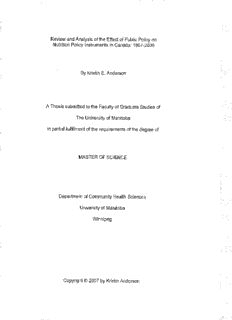
By Kristin E. Anderson
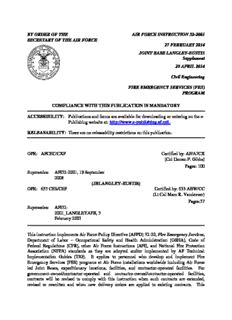
BY ORDER OF THE SECRETARY OF THE AIR FORCE AIR FORCE INSTRUCTION 32-2001 27 ...

arrigo 00 auto cx - Carolina Academic Press
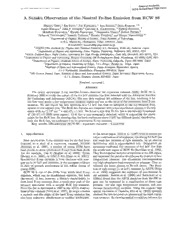
NASA Technical Reports Server (NTRS) 20070016569: A Suzaku Observation of the Neutral Fe-line Emission from RCW 86
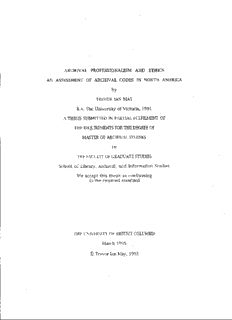
ARCHIVAL PROFESSIONALISM AND ETHICS AN ASSESSMENT OF ARCHIVAL CODES IN ...
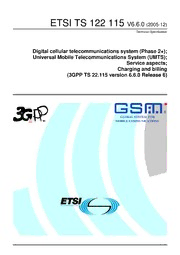
TS 122 115 - V6.6.0 - Digital cellular telecommunications system (Phase 2+); Universal Mobile Telecommunications System (UMTS); Service aspects; Charging and billing (3GPP TS 22.115 version 6.6.0 Release 6)
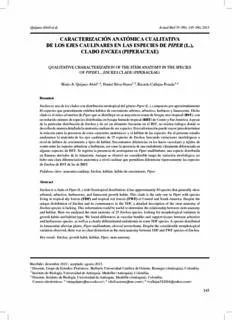
CARACTERIZACIÓN ANATÓMICA CUALITATIVA DE LOS EJES CAULINARES EN LAS ...

car-part ii - chapter 2 flight crew licensing car-fcl
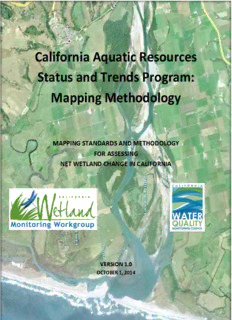
California Aquatic Resources Status and Trends Program: Mapping Methodology

Guerra Contra Todos los Puertorriqueños: Revolución y Terror en la Colonia Americana (Spanish Edition)
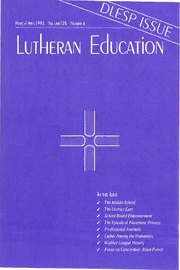
Lutheran Education Mar/Apr 1993

DC 1:2012cv00139 complaint attachment 5
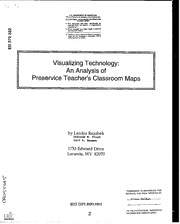
ERIC ED370582: Visualizing Technology: An Analysis of Preservice Teacher's Classroom Maps.
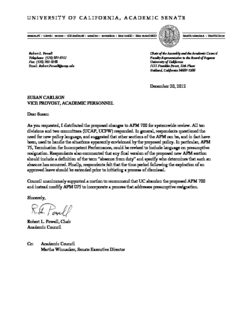
APM-700, Leaves of Absence PDF
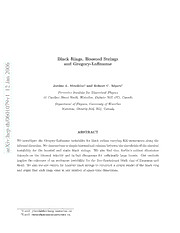
Black Rings, Boosted Strings and Gregory-Laflamme
